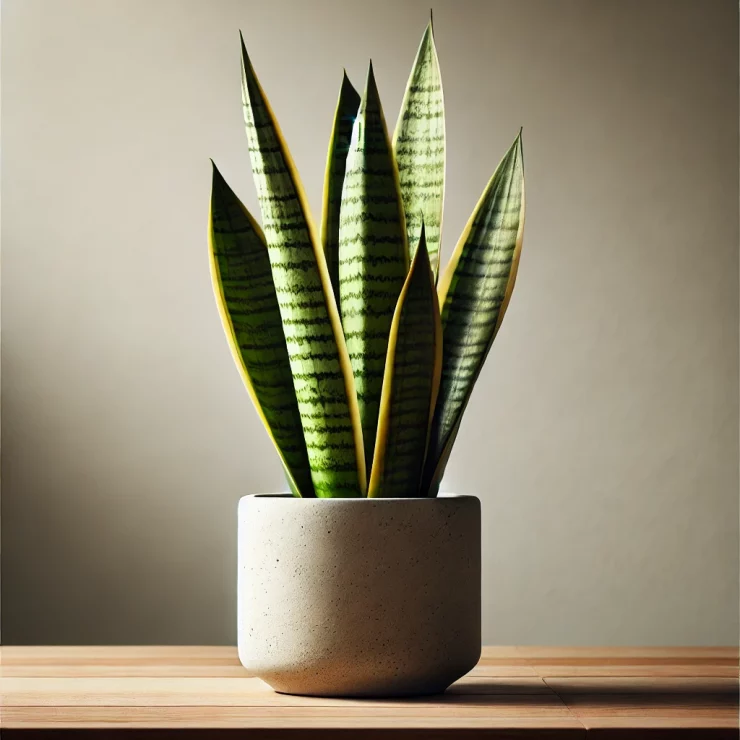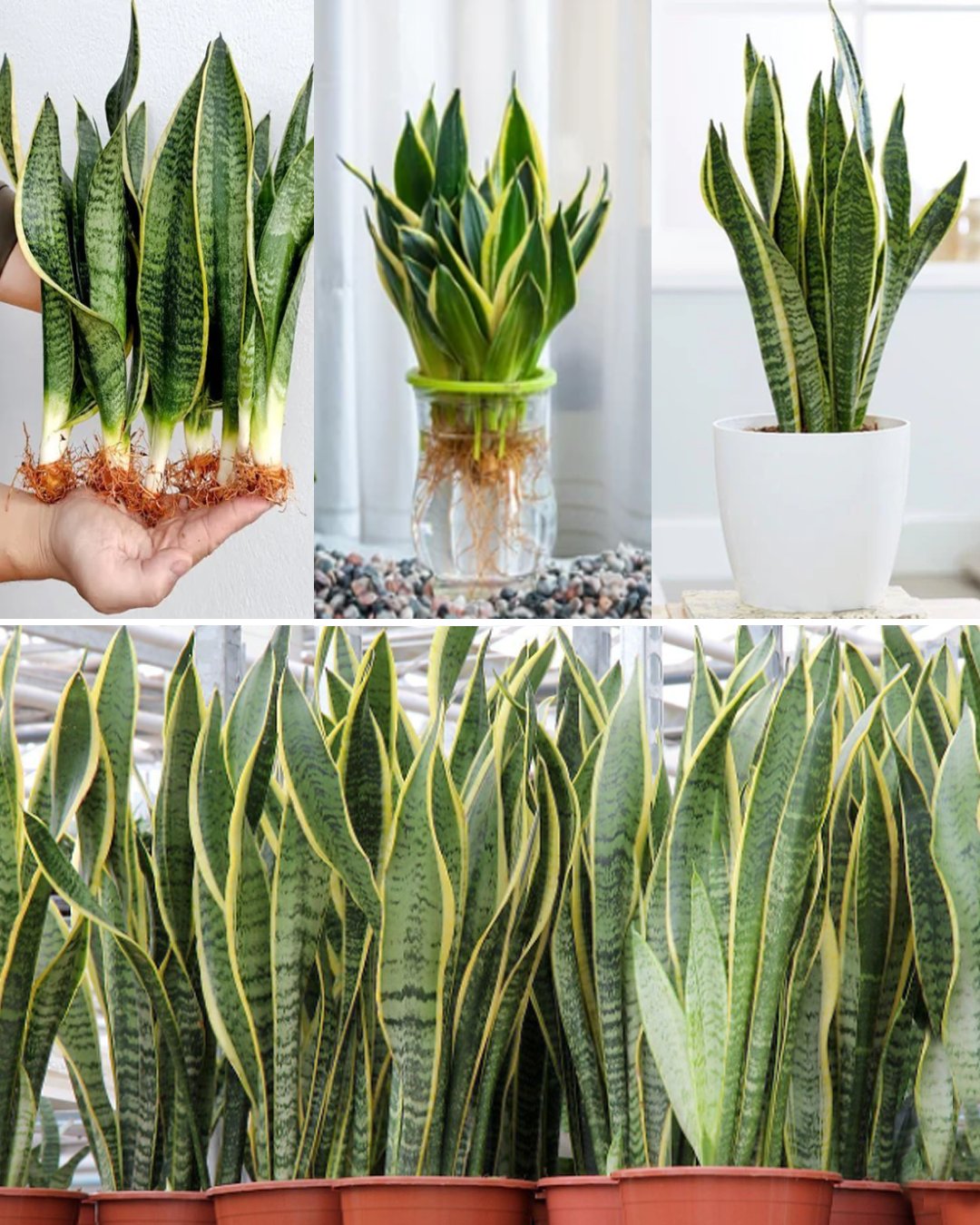Sansevieria, commonly known as Snake Plant or Mother-in-Law’s Tongue, is one of the most popular and resilient houseplants. Its striking upright leaves and air-purifying qualities make it a favorite among plant enthusiasts. The good news is, multiplying your Sansevieria is easier than you might think. Whether you’re looking to create more plants for yourself or to share with friends, this guide will show you the best methods for turning one Sansevieria into many.

1.Why Multiply Your Sansevieria?
Sansevieria is not only a low-maintenance plant but also an excellent way to purify indoor air. Multiplying your Sansevieria allows you to:
Expand your plant collection at no extra cost.
Share healthy new plants with friends and family.
Fill your home with greenery, contributing to a calm and refreshing environment.
Now let’s dive into the most effective methods for propagating your Sansevieria.
2.Multiplying Sansevieria Through Division
The easiest and most reliable way to multiply your Sansevieria is through root division. This method works best if your plant has grown large enough to have multiple clusters or rhizomes.
What You’ll Need:
A healthy, mature Sansevieria
Clean garden shears or a sharp knife
Fresh soil and pots for each new plant
Steps:
Remove the plant from its pot: Gently take the plant out of its container, being careful not to damage the roots.
Separate the rhizomes: Look for natural divisions in the root system. Sansevieria often forms multiple clusters of leaves. Use a sharp knife or your hands to divide the plant, ensuring each section has its own roots and at least a few healthy leaves.
Repot the divisions: Plant each section in fresh soil, making sure the roots are well-covered. Use well-draining potting soil, as Sansevieria prefers dry conditions.
Water sparingly: After repotting, give each new plant a light watering. Allow the soil to dry out between waterings to avoid root rot.
Pros of Division:
Immediate results with mature plants.
Higher success rate compared to other methods.
Each new plant has a well-established root system.
3.Propagating Sansevieria by Leaf Cuttings
Another popular method to propagate Sansevieria is through leaf cuttings. This method takes a little longer than division but can yield many new plants from just one leaf.
What You’ll Need:
A healthy Sansevieria leaf
Clean scissors or a sharp knife
Water or soil for rooting
Steps:
Cut a healthy leaf: Choose a mature, healthy leaf and cut it near the base using clean scissors or a sharp knife.
Slice the leaf into sections: Cut the leaf into smaller sections, each about 3–4 inches long. Remember which end is the base, as the base needs to go into the soil for successful rooting.
Let the cuttings callous: Allow the cut edges to dry for 1–2 days. This helps prevent rotting.
Place in water or soil:
In water: Place the base of the cutting in a jar of water. Make sure the cut part is submerged but the rest of the leaf is above water. Change the water every few days.
In soil: Plant the base end of each cutting about 1 inch deep in soil. Water sparingly and place the pot in indirect sunlight.
Wait for roots and new growth: In a few weeks, you’ll notice roots forming at the base of the cuttings. If using water, transplant the cuttings into soil once roots develop.
Pros of Leaf Cuttings:
You can create multiple new plants from a single leaf.
It’s a great way to propagate if you don’t want to disturb the entire plant.
4.Multiplying Sansevieria from Rhizome Cuttings
Rhizome cuttings are another effective method of propagating Sansevieria. This process involves cutting and planting the underground stems, or rhizomes, from which the plant grows.

What You’ll Need:
A healthy Sansevieria with visible rhizomes
Clean garden shears or a sharp knife
Fresh soil
Steps:
Remove the plant from its pot: Gently take the plant out of the pot and inspect the root system.
Locate and cut the rhizomes: Sansevieria rhizomes look like thick, white roots. Cut a rhizome that has at least one leaf growing from it.
Plant the rhizome: Place the rhizome in a pot with fresh, well-draining soil. Make sure the leaf and rhizome are both covered with soil.
Water and care: Water the plant lightly and place it in a location with indirect sunlight. Continue regular care until the new plant is established.
Pros of Rhizome Cuttings:
Works well with larger, more mature plants.
Ensures healthy new plants with established root systems.
5.Caring for Your New Sansevieria Plants
Once you’ve multiplied your Sansevieria, it’s important to care for the new plants properly to ensure they thrive.
Tips for Success:
Water Sparingly: Sansevieria plants are drought-tolerant and prefer to dry out between waterings. Overwatering can lead to root rot, especially with young plants.
Provide Indirect Light: While Sansevieria can tolerate low light, they thrive best in bright, indirect sunlight.
Use Well-Draining Soil: Make sure to use a cactus or succulent mix or a general potting mix with added perlite or sand for better drainage.
Avoid Humidity: Sansevieria prefers dry conditions, so avoid placing them in overly humid environments.
Multiplying your Sansevieria is not only simple but also rewarding. Whether you choose to divide the plant, use leaf cuttings, or propagate rhizomes, you’ll soon have an abundance of these hardy, air-purifying plants in your home. With the right care, your new Sansevieria plants will thrive, filling your space with lush greenery for years to come. Happy propagating!
News
JJ Redick reacts to Luka Doncic trade for Anthony Davis
In one of the most jaw-dropping moves of the season, the NBA landscape was rocked by the blockbuster trade involving Luka Dončić and Anthony Davis—a swap that has sent ripples of excitement, disbelief, and heated discussion through the league. Among…
Anthony Davis FULL reaction to trade to Mavericks for Luka Doncic
In a blockbuster move that sent shockwaves through the NBA and left fans reeling, Anthony Davis has been traded to the Dallas Mavericks in exchange for Luka Dončić. In the immediate aftermath of the news, Davis took to the media…
Shaq reacts to Dallas Mavericks wanting Kevin Durant after Luka-AD trade 
In the constantly shifting world of the NBA, trade rumors and blockbuster moves are a regular part of the season’s drama. The latest twist has fans buzzing: the Dallas Mavericks have reportedly set their sights on acquiring Kevin Durant in…
Donovan Mitchell FILTHY poster dunk on Kristaps Porzingis 
In a game filled with high-intensity moments and jaw-dropping highlights, one play in particular has left fans and analysts buzzing about Donovan Mitchell’s latest display of athleticism. Early in the contest, with the atmosphere already charged by an evenly matched…
Joel Embiid hits go-ahead bucket vs Mavs then chats with Anthony Davis after game
In one of the most thrilling contests of the season, Joel Embiid delivered a clutch performance against the Dallas Mavericks, punctuating the game with a go-ahead bucket that sent the home crowd into a frenzy. The atmosphere in the arena…
D’Angelo Russell game winner as Nets hit two 3’s in 3 seconds to win vs Rockets 
In one of the most electrifying moments in recent NBA history, D’Angelo Russell delivered an unforgettable game-winner that left fans and commentators in complete awe. With the Brooklyn Nets locked in a tense battle against the Houston Rockets, the outcome…
End of content
No more pages to load











